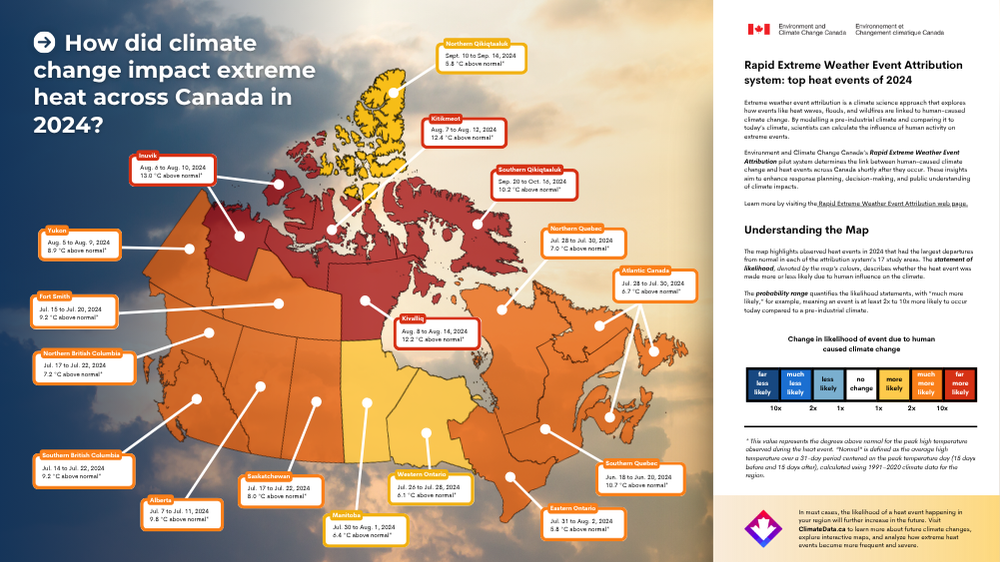Extreme weather event attribution is a climate science approach that explores how events like heat waves, floods, and wildfires are linked to human-caused climate change. By modelling a pre-industrial climate and comparing it to today’s climate, scientists can calculate the influence of human activity on extreme events. Environment and Climate Change Canada’s Rapid Extreme Weather Event Attribution pilot system determines the link between human-caused climate change and heat events across Canada, shortly after they occur. These insights aim to enhance response planning, decision-making, and public understanding of climate impacts.
The map below highlights observed heat events in 2024 that had the largest departures from normal1 in each of the attribution system’s 17 study areas. The statement of likelihood, denoted by the map’s colours, describes whether the heat event was made more or less likely due to human influence on the climate. The probability range quantifies the likelihood statements, with “much more likely,” for example, meaning an event is at least 2x to 10x more likely to occur today compared to a pre-industrial climate. As the map demonstrates, climate change had an impact on extreme heat events across Canada in 2024.









